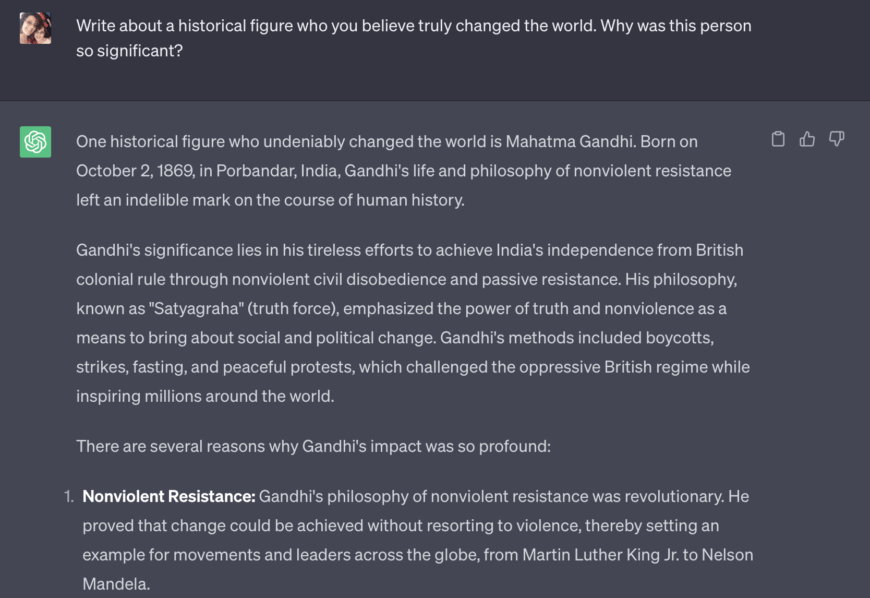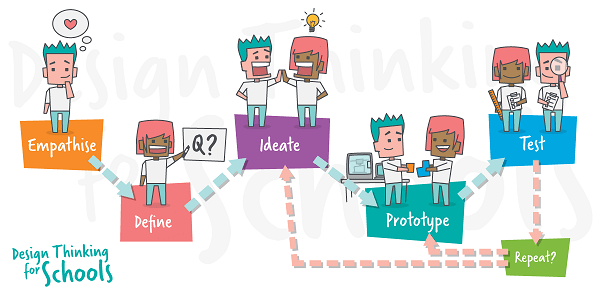When the generative AI application ChatGPT burst into popular culture in November, 2022, many educational institutions reacted by banning the tool outright. The fear was that it would enable students to automate their assignment writing. And it did. ChatGPT’s job is to generate text and answer questions given a prompt. In most cases it does a really good job as shown in Figure 1.

However, essays are but one form of assessment and have long been touted as an unimaginative and outdated form of assessment. I might even argue that the fact a computer application such as ChatGPT being able to write a convincing essay illustrates it is a poor form of assessment. Proponents of the removal of essays in education institutions (Donald, 2018) suggest they a) are rarely a good measure of achievement for intended learning outcomes, b) may not be a students original work thanks to online essay mills, c) do not reflect writing practices in the real world and d) feedback is slow and sometimes non-existent.
This doesn’t mean that ChatGPT and associated AI do not have a place in education. New technologies are always posing challenges in the educational sector. It’s not the technology that’s the issue, but the people and processes. Educators’ approaches to these digital advancements must not be to deny their existence but to understand how they can be used to transform assessment. AI tools, such as ChatGPT, offer students access to a wealth of information and can be most useful as research and practice guides in active and applied problem-solving tasks such as those used in design thinking.
Design Thinking is a methodology that cultivates innovation through experimentation. In education, design thinking fosters a mindset of discovery, experimentation, rapid prototyping and creativity.
Design thinking is an iterative, circular, structured process consisting of the phases:

When embedded in the curricula, design thinking empowers students in problem solving tasks to investigate new ideas, consult experts, research domains and design, build and test physical solutions in a highly collaborative environment.
So how can teachers embrace ChatGPT and use it to enhance design thinking approaches?
ChatGPT is capable of facilitating the generation of novel ideas, enhancing creativity and improving product development (Haleem, 2022). It can reinforce the principles of design thinking through its ability to generate student centred solutions with its iterative problem solving approach (Enhold, 2022). For each of the phases in design thinking, ChatGPT can be a useful tool.
During the empathise stage of Design Thinking, students seek to understand the needs and perspectives of the users for whom they are designing. ChatGPT can help by simulating user personas or providing insights from a hypothetical user’s point of view. Students can have conversations with the AI to explore different user scenarios and gain deeper empathy for their target audience. A typical conversation with ChatGPT in the role of a beginner user for students tasked with designing a new fitness app might look like this:
Student Team: We’re developing a fitness app and want to understand the needs of different types of users. Let’s start with a beginner user.
ChatGPT as Beginner User Persona:
This information can inform the design of the fitness app to ensure it addresses the needs and concerns of users in the Empathise stage.
In the Define stage, the goal is to distill the insights gained during the Empathize stage into a clear problem statement. Let’s continue with the fitness app example and see how ChatGPT can be used in this stage:
In this example, ChatGPT assists the students in refining their problem statement by synthesizing the insights gained from the Empathize stage. The AI helps the team craft a statement that encompasses the main challenges while also reflecting the desired features and benefits of their fitness app.
Next, in the Ideate stage, the goal is to generate a wide range of creative ideas. ChatGPT can be used to facilitate brainstorming and explore innovative concepts. Let’s continue with the fitness app example and see how ChatGPT can be involved:
As can be seen in this example, ChatGPT generates a variety of innovative ideas for the fitness app’s features. The AI also provides guidance on how to ensure user-friendliness and usability while incorporating these ideas. The students can use these suggestions as a springboard for further discussions and concept development during the Ideate stage.
The goal of the Prototype stage is to create a tangible representation of the ideas generated in the “Ideate” stage. ChatGPT can help students conceptualize and plan their prototypes thus:
In this example, ChatGPT provides a structured approach to creating a prototype for the fitness app. The AI outlines the key steps, considerations, and decisions needed to build an interactive representation of the app’s features and functionality.
During the Test stage when the goal is to gather feedback from users and evaluate the prototype’s effectiveness. ChatGPT can simulate user interactions and provide insights into potential user reactions. A chat about the fitness app might go like this:
Here, ChatGPT plays the role of a simulated user, providing feedback on how the user might interact with the fitness app prototype. The AI offers insights into user expectations, potential challenges, and preferences during different stages of app usage. This helps the students understand how users might perceive and interact with their design, ultimately improving the app’s usability and effectiveness.
Moving onto the Iterate stage where the goal is to refine and improve the design based on the feedback received during testing, ChatGPT can provide suggestions for making adjustments and offer insights on how to address any issues that were identified. The chat about the fitness app might continue like this:
In this example, ChatGPT assists the students in generating ideas for iterating on the fitness app design based on user feedback. The AI provides actionable suggestions for addressing user concerns and enhancing the app’s features, usability, and overall user experience.
When it comes to turning the prototype into a functional design, ChatGPT can help with the planning of the Implementation stage. It can make technical decisions, and provide insights into potential challenges. Take a look at an example conversation:
Here, ChatGPT provides a structured approach to the implementation process for the app. The AI outlines the key steps, considerations, and decisions needed to turn the refined design into a functional and user-friendly solution.
Finally, ChatGPT can assist in the Share and Communicate stage. The goal here is to effectively convey the design solution and its benefits to stakeholders and users. The AI can help generate persuasive narratives, create presentation materials, and formulate key messages like this:
ChatGPT helps the students, in this example, to craft effective communication strategies and materials to share their fitness app with stakeholders and potential users. The AI provides tips for messaging, storytelling, and visual consistency to ensure that the communication resonates with the target audience.
As has been shown here, ChatGPT and similar AI chatbots can be powerful classroom tools, not through the automation of rote learning activities but through the provision of an interactive and collaborative tool that acts as a sounding board and guide during the design thinking process. Banning access to new and evolving technologies, because they are poorly understood by educators who may feel threatened by them, is not a smart nor progressive way to evolve the curriculum or assessment. New technologies always find a way into the classroom when students find them compelling. It’s now the educators’ job to embrace this technological evolution and integrate it into their teaching practices just as their predecessors have over the past several hundred years.
For even the humble book at the invention of the printing press had its skeptics and was declared by 15th Century German Scholar, Johannes Trithemius as a negative influence on learning and knowledge transmission. He wrote:
All new technology has the potential to enhance the learning and teaching process. However, it is how it is used and integrated into existing processes that are important. Without proper guidance, students will take the easiest path, which is to see ChatGPT as a godsend for writing up a quick essay. Though, as has been explored herein, it can be so much more.
In the words of ChatGPT, “It’s important to note that while ChatGPT can be a valuable resource, it’s most effective when used in combination with human expertise and collaboration. Design thinking emphasises the value of multidisciplinary teams, and ChatGPT can serve as an AI collaborator that enhances the creative and problem-solving processes.”

Dr Penny de Byl is the senior Unity developer at Makers Empire and founder and CEO of Holistic3D.com an online education provider of courses in computer game development and related subjects. Throughout her career, in universities both nationally and abroad, she has been driven by her love of visual art and computer programming. Her passion lies in developing algorithms to generate 3d game environments and revealing the beauty of mathematics through her work to students. She’s written many research papers focusing on games-based learning in addition to books on the Unity Game Engine, OpenGL and Python. Penny is also the proud mother of Tabytha, who is currently undertaking studies in mathematics and computer science at the University of Queensland.

Please wait while you are redirected to the right page...